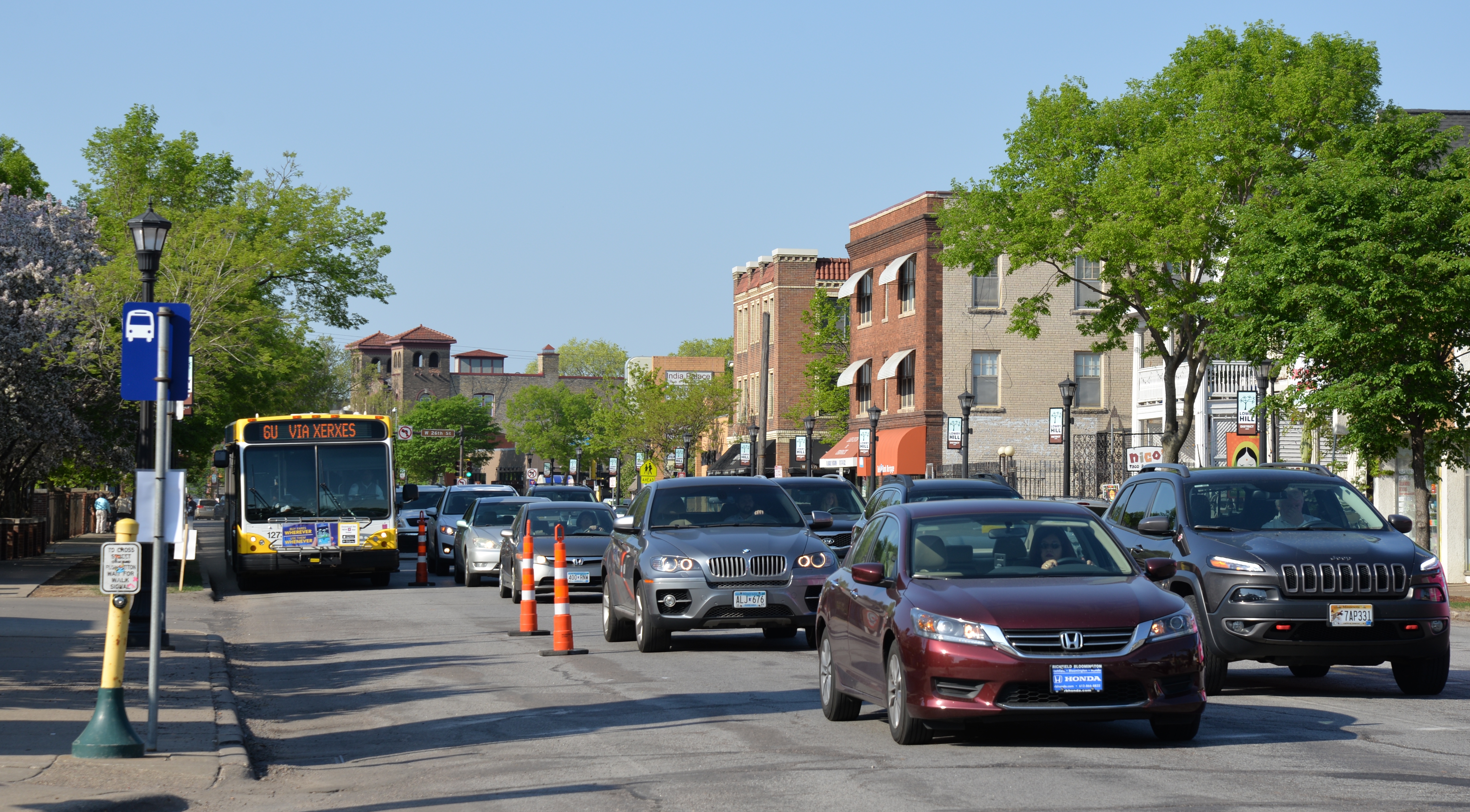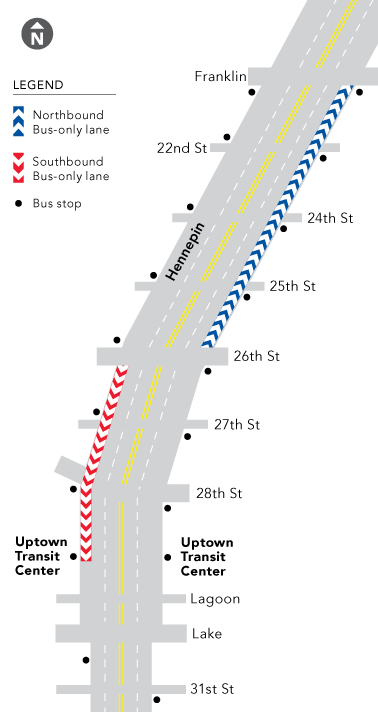
Bus customers who travel on Hennepin Avenue know traffic moves slowly when the street is full of vehicles. In fact, during rush hour, buses travel an average of just six miles per hour.
Exploring ways to provide faster, more reliable service, Metro Transit and the City of Minneapolis will test bus-only lanes on a portion of the corridor between Tuesday, May 15, and Thursday, May 17. Data and public input will be collected during the pilot to evaluate impacts and determine next steps.
What’s happening?
 A northbound bus-only travel lane will be created by restricting street parking on the east side of Hennepin Avenue between 26th Street and Franklin Avenue each morning from 6 a.m. to 10 a.m. A southbound bus-only travel lane will be created by restricting parking on the west side of Hennepin Avenue between 26th Street and the Uptown Transit Center each evening from 3 p.m. to 7:30 p.m.
A northbound bus-only travel lane will be created by restricting street parking on the east side of Hennepin Avenue between 26th Street and Franklin Avenue each morning from 6 a.m. to 10 a.m. A southbound bus-only travel lane will be created by restricting parking on the west side of Hennepin Avenue between 26th Street and the Uptown Transit Center each evening from 3 p.m. to 7:30 p.m.
Parking meters will be marked in advance of the parking restrictions and vehicles that have not been moved will be towed. The bus-only travel lanes will be marked with traffic delineators that will be removed during off-peak hours.
All Hennepin Avenue bus routes will use the bus-only lanes. Customers who board at stops adjacent to the bus-only lanes will see no changes at their boarding locations.
Why is this pilot being undertaken?
The bus-only lane pilot will help answer three key questions:
> What are the changes in travel time and reliability?
> What is the reaction from riders, neighborhood residents, businesses and other property owners?
> Are there other improvement strategies that would complement the bus-only lanes?
What are the expected advantages?
Bus-only travel lanes are used in many large cities to help buses move more efficiently through busy urban corridors. In the Twin Cities, designated bus-only shoulders allow buses to bypass traffic on more than 200 highway miles. The Marq2 corridor also uses bus-only lanes to provide bus riders safe and efficient access in and out of downtown Minneapolis.
Faster, more reliable bus service makes transit a more appealing alternative to driving alone. The Hennepin Avenue bus-only lanes are expected to improve consistency and save a few minutes of travel time in either direction. The benefits would be even more pronounced when snow or other unforeseen incidents create heavier traffic than usual.
Why Hennepin Avenue?
With 400 daily bus trips, Hennepin Avenue is one of the region’s busiest transit corridors. More than 3,300 people board buses between Lake Street and Franklin Avenue each weekday. During peak periods, nearly half of the people traveling on Hennepin Avenue are on a bus.
Metro Transit is also planning for future rapid bus improvements on Hennepin Avenue. Planning for the E Line will begin with a corridor study in 2018. Like the A Line on Snelling Avenue in St. Paul, the E Line will provide faster service, enhanced stations and larger vehicles.Bus only lanes could also be incorporated into the project.
Pending full project funding, the E Line could be under construction as soon as 2022, in coordination with other street construction projects in the corridor. The E Line is on track to becoming the region's fifth rapid bus line.
Share your feedback